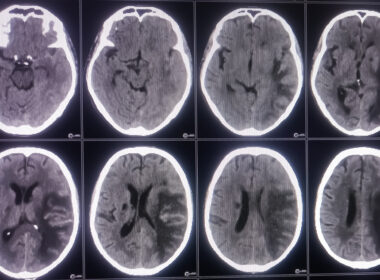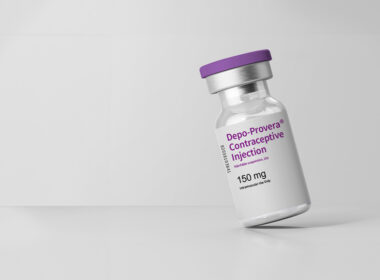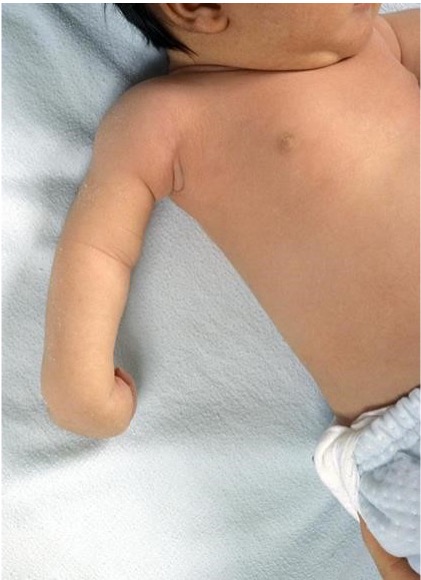The arrival of a newborn into the world is a course for celebration. Sadly, not all doctors and nurses are careful enough while attending to new moms and their babies, which can result in life-threatening complications or even the death of the mother or child.
In the absence of prompt medical treatment or attention, injuries to the brachial plexus (a network of nerves that transmits signals to and from the shoulder, arm, and hand) can have devastating consequences, such as long-term incapacity and unbearable agony. Recent advancements in nerve surgery have enabled a remarkable improvement in mobility and function at the shoulder, elbow, and hand while simultaneously decreasing pain in infants.
Brachial plexus is a severe possibility during birth. Around 1-3 babies out of every 1,000 are born with a brachial plexus injury, commonly known as a brachial plexus birth injury. The baby’s shoulders may become lodged in the mother’s pelvis even after the head has been born. The shoulders become unrestricted as the brachial plexus nerves are stretched from the head tilted to the side. Some incidences of brachial plexus during cesarean sections have been linked to the baby’s position in the uterus, and the condition can emerge spontaneously in highly unusual circumstances.
What Is Brachial Plexus Birth Injury?
Brachial plexus is when the arm becomes weak or paralyzed due to damage to the brachial plexus, which can happen during birth and delivery. The brachial plexus is a complex network of nerves that extends from the cervical spine to the upper arm. These neurons supply the feeling of touch and the mobility of the arm and hand.
Types of Brachial Plexus Injury
Injuries to the brachial plexus during birth can be broken down into subtypes based on the specific nerves affected and the order in which they were injured. The various forms of brachial plexus injuries include the following:
Stretch (neurapraxia)
Neuropraxia is caused by prolonged compression or stretching of a nerve beyond its normal range. Myelin insulates and supports a neuron, making it vital to the nervous system’s operation. The actual neuron remains undamaged, while the surrounding myelin sheath is damaged.
Rupture
Rupture is a common type of nerve injury where the nerve is ripped but not at its attachment to the spine. The damage is external to the spinal cord and may require surgery to repair.
Neuroma
The neuroma occurs when a damaged nerve starts to mend, but scar tissue forms. Injured nerves cannot send and receive signals because scar tissue is pressing on them. Neuroma wounds cannot heal without medical attention.
Avulsion
An avulsion is a deep rupture in the skin that separates the epidermis from the dermis. Skin avulsions typically result from trauma, such as that sustained in a car crash or from a machine. Most injuries of this severity require hospitalization and intensive treatment.
Is There Hope for Children Born with Brachial Plexus Injuries?
Birth injuries to the brachial plexus sometimes result in permanent weakening or paralysis of the affected arm but will recover on its own in some cases. When infants sustain brachial plexus injuries, physical therapy is vital for them to make a complete recovery.
Physiotherapy stretches and exercises are most effective when the treatment regimen is followed thoroughly. The physician will keep a close eye on infants. By the time they are 3 to 12 months old, many children have fully recovered.
Diagnosis of Brachial Plexus Injury in Babies
After collecting a thorough history and conducting a thorough physical examination, your baby’s pediatrician can determine if they have suffered brachial plexus damage at birth. Planned visits with a family doctor are necessary since most newborns who suffer brachial plexus injury make a full recovery within the first month to six weeks after birth. If your child’s symptoms have not improved after six weeks, you should take them to a pediatric orthopedist or brachial plexus specialist.
Medical evaluation and care for these infant injuries are often managed by an emergency medicine specialist with expertise in pediatrics. The following can be used to diagnose brachial plexus injury in Babies, they include:
- Magnetic resonance imaging (MRI)
- X-rays
- nerve conduction study (NCS) and electromyogram (EMG) to test nerve and muscle function.
Signs and Symptoms of Brachial Plexus Injury in Babies
Brachial plexus injuries have comparable symptoms for people of all ages, but an infant cannot communicate that it is numb or that it cannot move its arm. To effectively examine and treat a newborn with this form of injury, the symptoms of this kind of injury in a newborn must be detected by a medical professional or the parents to be appropriately assessed and treated.
It’s essential to keep an eye out for the following signs and indicators of brachial plexus injury in babies:
- A disproportionately weaker hold on the one hand than the other
- Some activity in one arm but not the other
- Immobility, especially of the shoulder and elbow, either entirely or partially.
Is It Possible to Repair the Brachial Plexus?
Injuries to the brachial plexus in infants are common and can occur during birth or delivery. The medical term for this is neonatal brachial plexus palsy (NBPP). Brachial plexus injuries can range from mild to severe, with the latter typically requiring surgery to rehabilitate the arm and hand. Many infants require physiotherapy and occupational therapy after birth. A physical therapist can be of great benefit by teaching parents recovery-oriented activities.
Treatment of Brachial Plexus Injury in Babies
Children with brachial plexus injuries benefit from physical therapy because it can help them avoid or lessen the severity of joint contractures. Muscle strength can be maintained or rebuilt through physical exercises by modifying toys or activities that encourage movement and play. Regular activities that promote home and community participation are also important.
Physical therapy or occupational therapy
Therapy is recommended to help with arm use and prevent further stiffening of the affected arm. Instructing parents how frequently to perform range-of-motion (ROM) exercises with their child at home is a standard part of a therapist’s job. Maintaining healthy joints and muscles requires you to engage in these activities regularly.
What Surgical Procedures Can Be Done to Repair a Damaged Brachial Plexus?
Children with issues may benefit from surgical treatment three to six months after birth. Medical professionals treating your child’s brachial plexus birth damage can choose from a number of surgical procedures, including:
Nerve surgery
Surgery on the nerves, also known as microsurgery, is recommended if the newborn’s recovery is insufficient three to six months after delivery. It is most effective between 3 and 9 months and is usually no longer helpful after one year. Surgery of this type typically involves both nerve grafting and nerve transfer.
- Nerve grafting surgery
During surgery, damaged nerve tissue is removed and replaced with a graft from a healthy nerve. Most of the time, the leg is the origin of these nerves (sural nerves).
- Nerve transfer surgery
Nerve transfer surgery is a procedure done to replace damaged nerves with healthy nerves from the arm or chest.
Osteotomy
An osteotomy is a surgery performed to realign the hand and arm to increase the range of motion. The humerus (upper arm bone) or the forearm are common impact points.
Tendon transfers
A tendon is the bone-attaching portion of a muscle.
In tendon transfers, the tendon is detached from its original attachment site and reattached elsewhere. Between the ages of one and adulthood, this therapy can be performed to aid a weakened or injured muscle. For better arm elevation, surgeons may perform tendon transfers in the shoulder, arm, wrist, or hand. After surgery, the child wears a cast for four to six weeks.
Can brachial plexus Injury or Condition Be Prevented?
Pregnant women should get checked for gestational diabetes as part of their prenatal care. Babies born to mothers with gestational diabetes are often larger. Injury to the brachial plexus is more likely to occur in a newborn who is more significant than average when it is delivered. Careful attention during labor and delivery is crucial.
The birthing health care professional may be able to advise the woman on the most advantageous positions to take during labor and delivery to facilitate optimal newborn mobility.
Additionally, the usage of delivery aids has been linked to brachial plexus injuries. Certain parent advocacy groups propose that families examine the birth environment if the mother has known risk factors related to brachial plexus damage.
Shoulder dystocia (an injury the newborn suffers when their shoulder becomes stuck in the birth canal) may be avoided or mitigated in a more flexible birthing facility.
There would be an increased risk of brachial plexus injury in subsequent pregnancies if the first birth were complicated by shoulder dystocia.
Expectant parents should consult with their delivery health care provider to discuss their previous birth experiences to develop a comprehensive birth plan that minimizes potential complications.












